The fastest-growing trees to plant in your garden
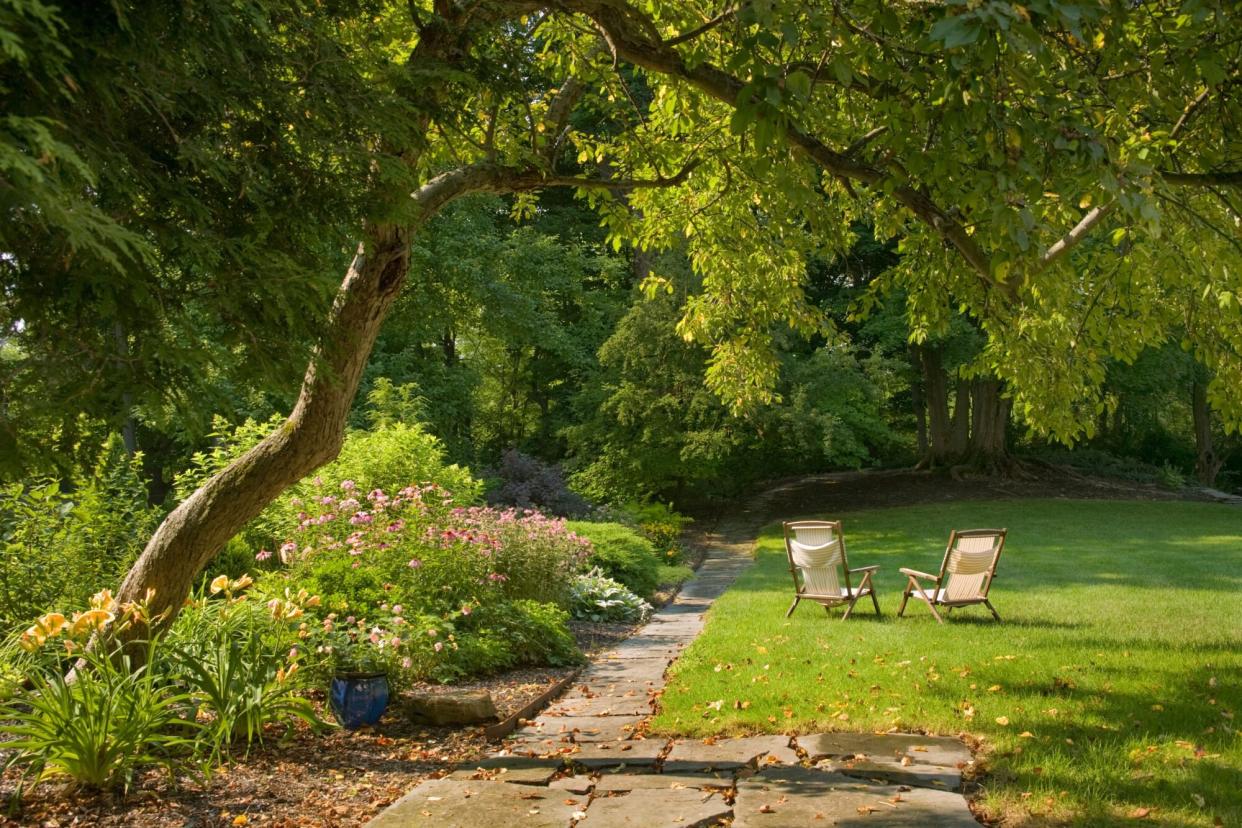
Jon Lovette / GETTY IMAGES
While colorful flowers, fragrant herbs, and ornamental grasses tend to sprout foliage rather quickly, waiting for a tree sapling to mature can take multiple decades—between 20 and 30 years. Not all trees grow at a snail's pace, though. Some can reach maturation in as little as 10 years, offering ample shade, privacy, and beautiful leafage even before it's considered completely fully grown. To expedite foliage in your own yard, consider planting one of these fast growing trees.
Related: Martha's Guide to Planting and Growing Strong, Healthy Trees
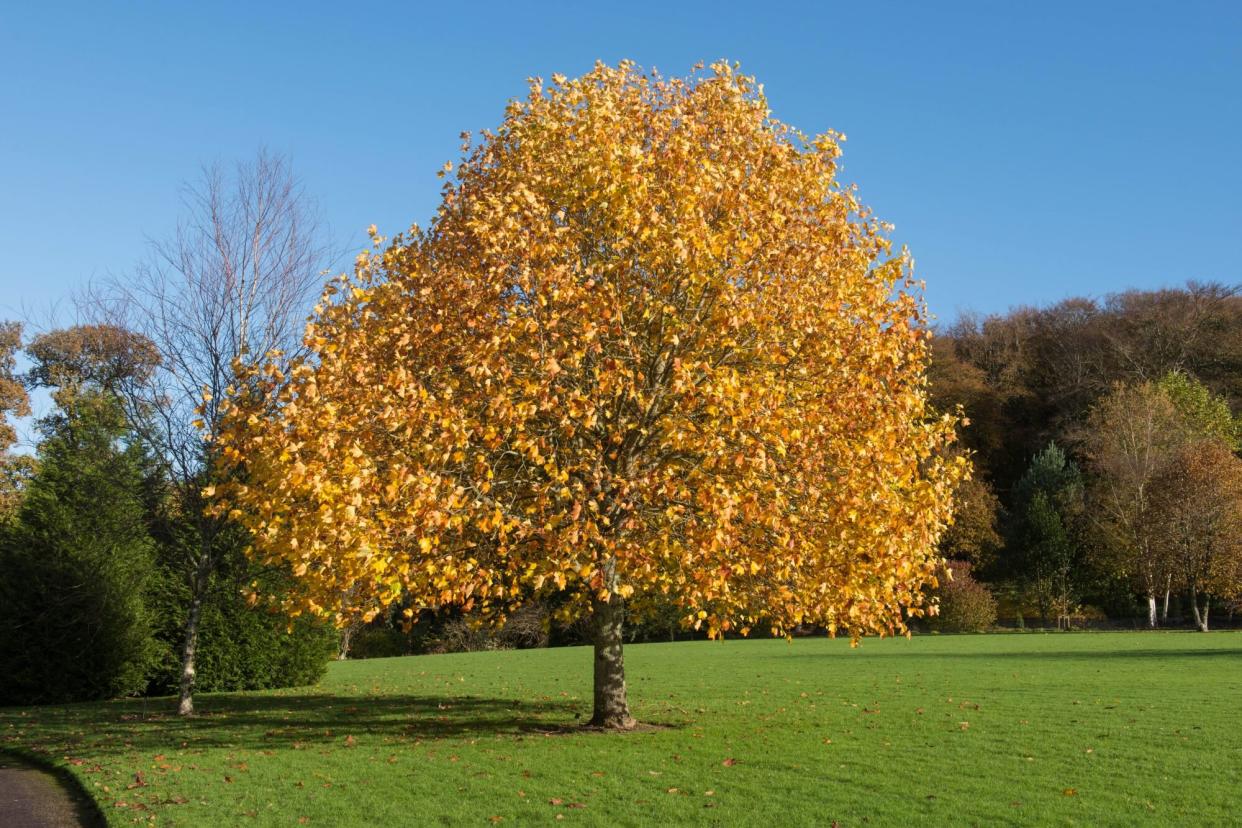
GETTY IMAGES
Tulip Tree (Liriodendron tulipifera)
Zones: 4-9
Maturation: 15 years
Care: Easy
With its unusual four-lobed leaves and tulip-like yellow flowers that bloom in early summer, the tulip tree invites you to stop and admire its foliage. "It's a great addition to any garden in want of a tree to attract local wildlife and provide shade," notes Breanna Sherlock, an in-house expert gardener for Planta. "In autumn, their leaves turn a lovely golden hue so it's beautiful in just about every season."
These hardy, fast-growing trees can withstand the cold and live in most climates, with many adding about 2 feet in height per year. Although they're not considered mature until about 15 years old, their growth habit produces a central trunk that makes it beautiful at any stage.
"It's a great tree to plant at a garden border since it's deer resistant," Sherlock notes. "They also attract pollinators, such as hummingbirds and insects, and are a great habitat for nesting birds."
Care Requirements
Ideal for zones 4 through 9, tulip trees allow for a more hands-off care approach; they all but take care of themselves once established. About 5 to 7 gallons of water per week is recommended, particularly during the warmer months. Pruning isn't technically required, but if you want to maintain a well-shaped crown, then opt to prune every three to five years.
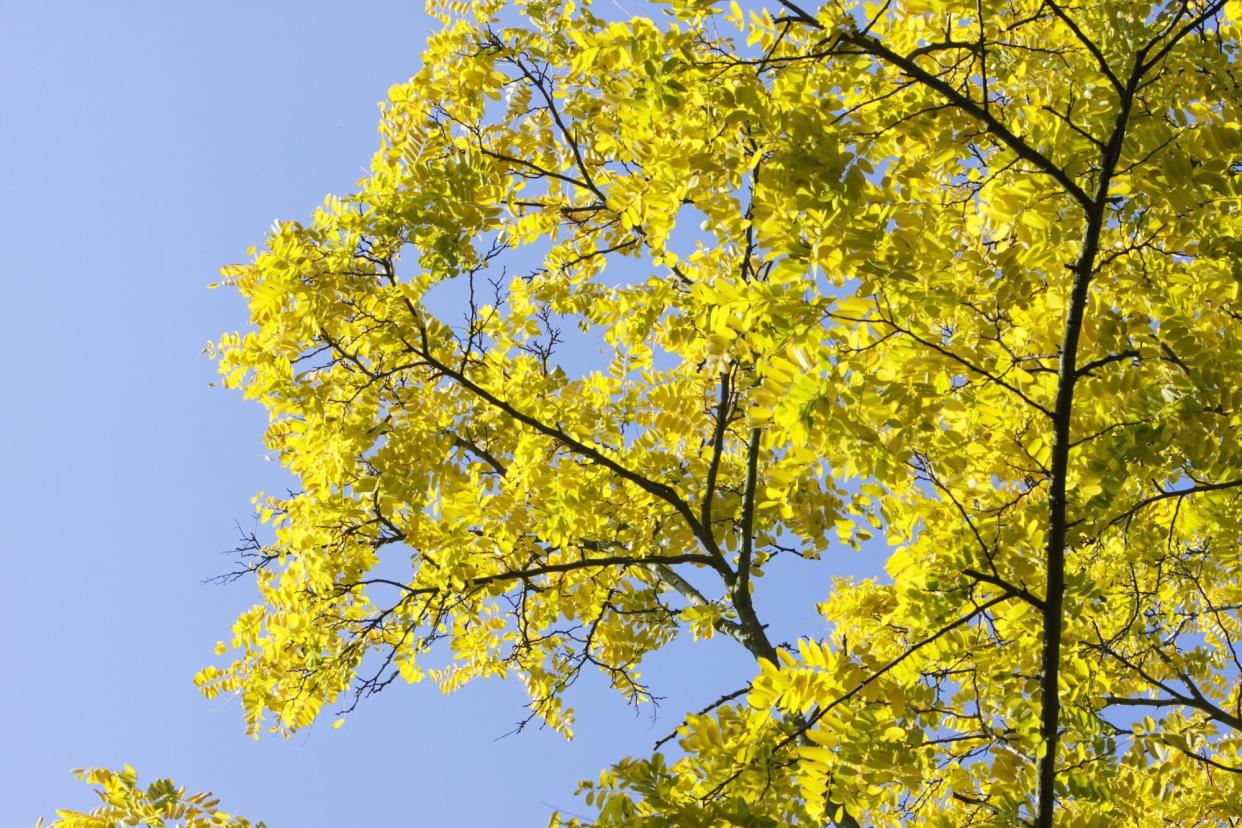
GETTY IMAGES
Shademaster Thornless Honeylocust (Gleditsia triacanthos)
Zones: 4-9
Maturation: 10 years
Care: Easy
The Shademaster Thornless Honeylocust is both fast-growing and long-lived, often reaching a lifespan of 70 years or more. (This isn't always the case for fast-growing trees.) "It has a brilliant yellow fall color and when leaves are shed, the leaflets separate from the rachis, allowing them to more easily disappear into underlying lawn or softscape which means raking is not required," says Zolene Quindoy, lead horticulturist at Yardzen. "The pinnately-compound leaves cast a dappled shade, which is favorable for underplanting."
Honeylocust trees can grow as much as 3 to 4 feet per year when young, which helps them reach 40 to 50 feet tall within 10 years. Quindoy says that in ideal conditions, they can even reach up to 80 feet tall or more, broadening into a wider silhouette as branches become more horizontal. That said, this tree isn't ideal for small yards.
Care Requirements
Honeylocust is considered a low-maintenance tree. It's tolerant of a wide range of soil conditions and is not bothered by drought, summer heat, occasional flooding, saline conditions, or urban pollution. It does prefer full sun, and young trees often benefit from strategic pruning to help encourage a central leading branch. After about two to three decades, the tree may produce pods that require yard maintenance.
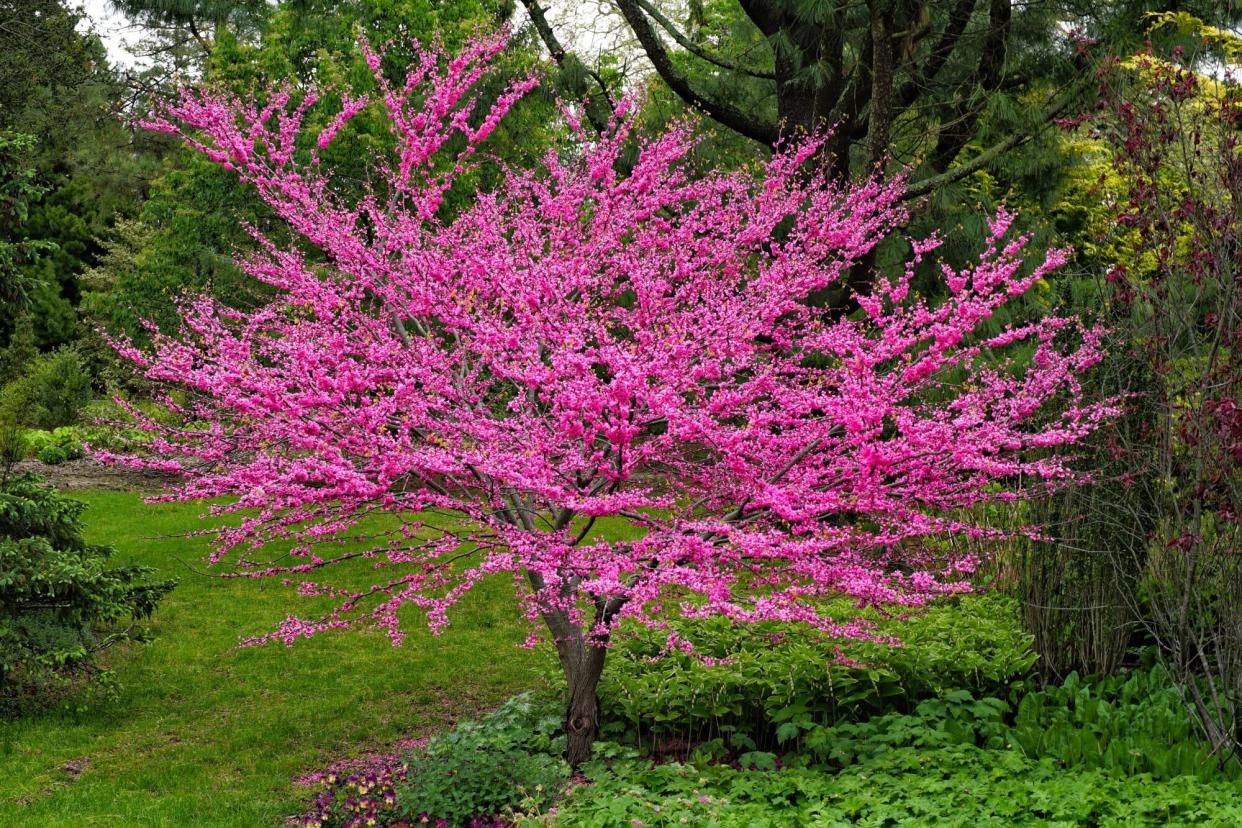
GETTY IMAGES
Eastern Redbud (Cercis canadensis)
Zones: 4-9
Maturation: 10 years
Care: Moderate
For a vibrant flash of color in your yard, look no further than the splendid Eastern Redbud. This tree produces a bright, purple-pink flower that grows right from the trunk and branches. "Redbud trees are always such a pleasant surprise in the garden because they flower so early in the spring—even before the leaves begin to emerge," says Sherlock. "Although they're deciduous trees, they are still very interesting to look at even during winter because of the unique zig-zagging pattern of the branches." She adds that this fast growing tree also creates quite a show come autumn when its large leaves transform into a deep rusty red hue.
You can expect one foot of growth per year, and flowers emerge starting around year three or four. By age 10, this tree boasts a robust network of branches and looks fully mature.
Care Requirements
Redbuds happily grow in zones 4 through 9, but dislike hot and dry climates. They prefer full sun or partial shade, don't take well to transplantation, and benefit from light pruning throughout the year.
"Some gardeners enjoy the shrub-like growth, while others would prefer a single, central trunk," Sherlock says. "It's important to know that these trees will flower on last year's growth so it's best to prune in the spring just after flowering. If you prune in early winter, do so lightly as this not only removes potential flowers but can make your tree more susceptible to damage in winter—especially when young."
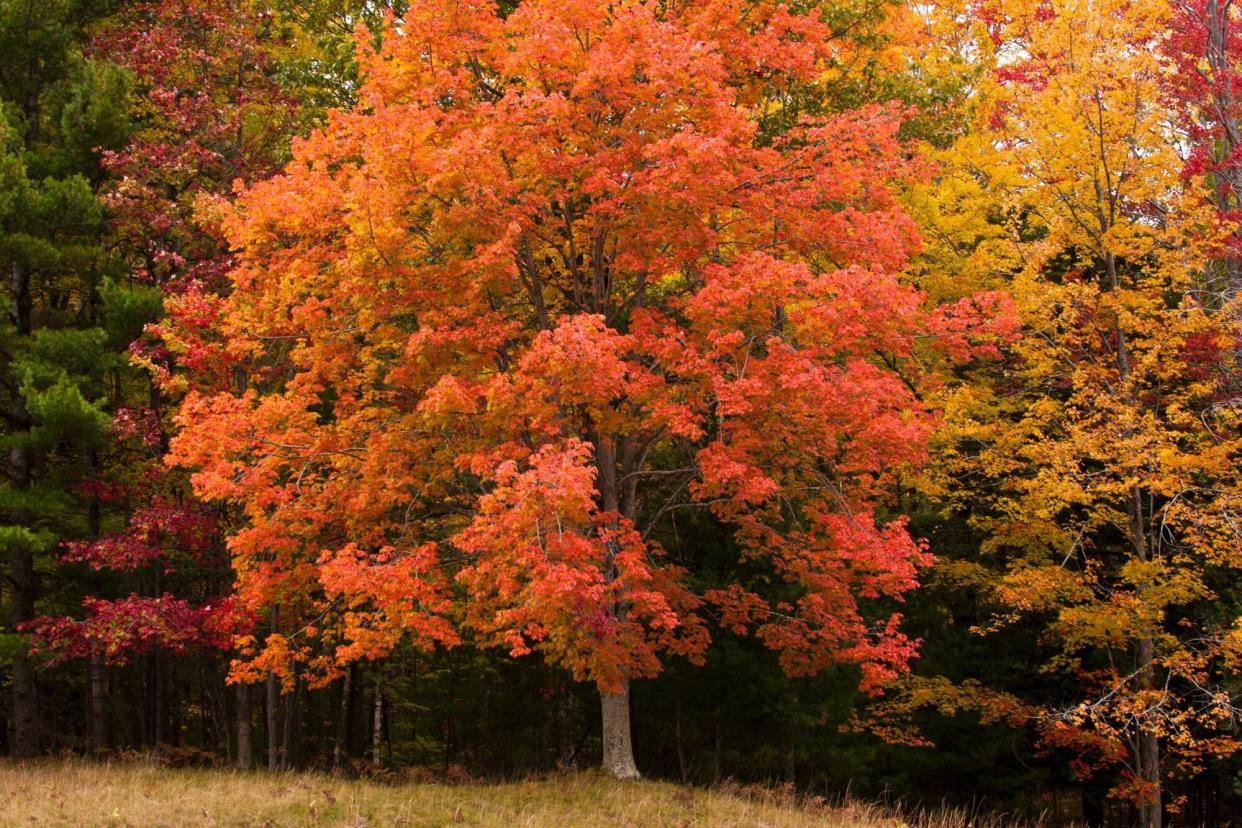
Ed Reschke / GETTY IMAGES
Red Oak (Acer rubrum)
Zones: 3-9
Maturation: 20 years
Care: Moderate to Difficult
The mighty red oak is a native, long-lived tree that often stretches 70 feet into the sky once fully grown. Though it does take about 20 to 30 years before it reaches this full maturation, you'll be able to enjoy a full wash of foliage much sooner than that, since it grows at a speedy rate of about two feet per year. Within 15 years, you'll have a gorgeous tree measuring in at about 30 feet. It comes in a variety of leaf sizes and colors, and is a preferred tree for lining lawns and streets.
"Maples are keystone species that host numerous moths and caterpillars, which in turn feed birds and other wildlife," Quindoy says. "Also, its seeds are an important food source for birds and small mammals and their branches provide nesting sites, as well."
Care Requirements
The red oak is a relatively low maintenance tree that prefers full sun and evenly moist, well-draining soil. It can run into some issues, though. "This species is prone to developing surface roots, which can make underplanting difficult and interfere with lawn and nearby hardscape," says Quindoy. "Deeper, less frequent watering from a young age will help encourage the development of a deeper root system, as well as foster the tree's ability to tolerate drier conditions later on."
Quindoy adds that some red oaks can experience disease or insect infestations, which you can curb by planting alongside resistant cultivars and avoiding any damage to the tree (a common entry point for pathogens).
Related: Into the Woods: Step Inside Martha's Japanese Maple Tree Forest at Bedford
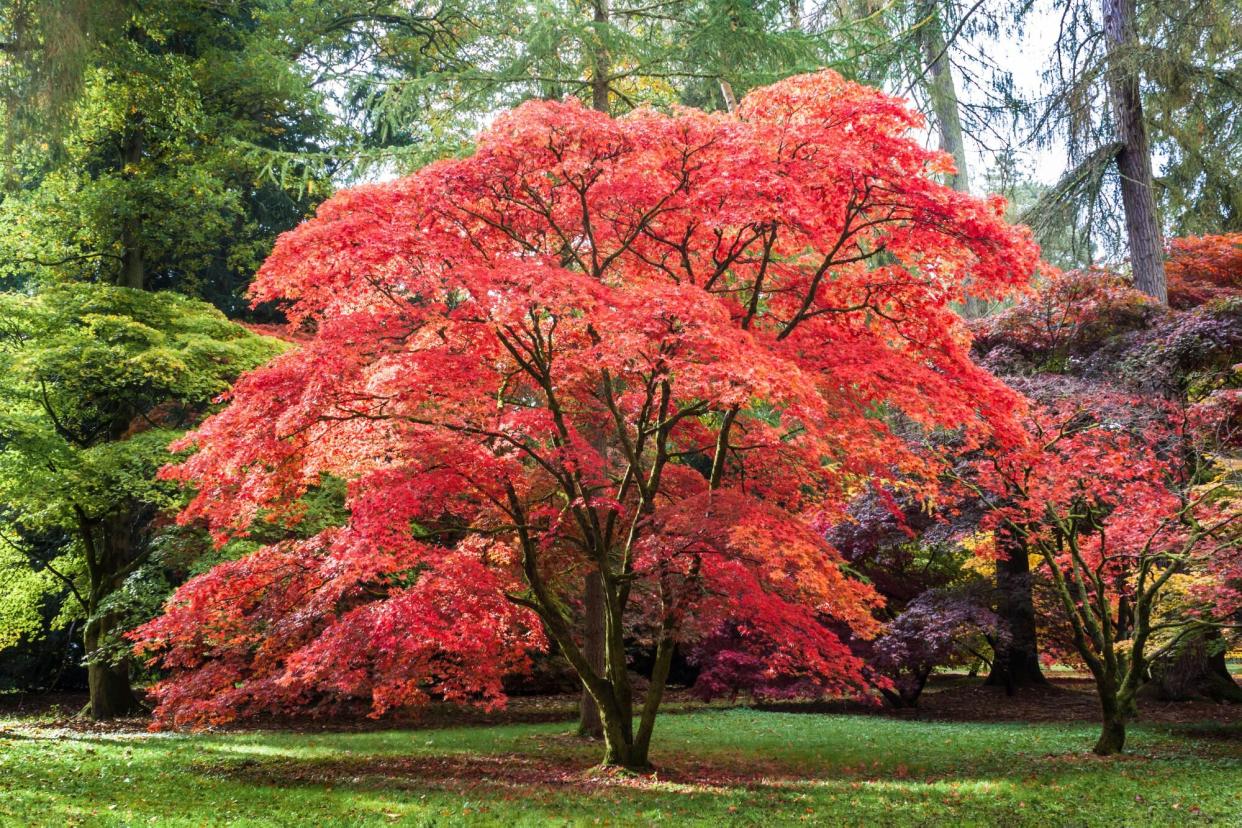
GETTY IMAGES
Japanese Maple (Acer palmatum)
Zones: 5-8
Maturation: 10 years
Care: Moderate
Japanese maple trees have a tendency to make people do a double take thanks to their colorful foliage and striking branches. It's considered a small- to medium-sized tree, making it perfect ornamentation for a variety of yard sizes. They can also grow well in pots when cared for properly.
The Japanese Maple grows more slowly than other trees on this list at a rate of about 1 foot of height per year, but its small size means it's considered mature after about eight to 10 years. Sherlock recommends buying the largest tree your budget allows so you can enjoy its maturity early on. "There are so many varieties that all have slightly different growth habits," says Sherlock. "Some grow taller in a classic tree shape, but others are much more rounded and low-growing, like shrubs."
Care Requirements
Japanese maples prefer moderate climates, as hot weather or intense sun notoriously scorches their leaves. This tree also requires sufficient water throughout the year and will require more attention when it's dry. Plan to water it two to four times per week with about 11 gallons of water total. One benefit is that at an average height of 15 to 20 feet, it doesn't grow too large—so you won't have to worry about pruning it unless you want a certain aesthetic.
